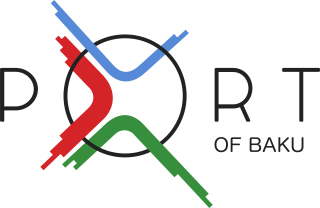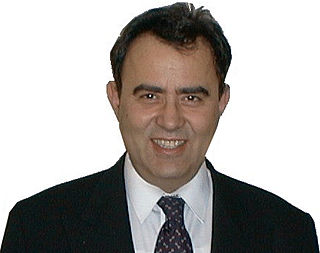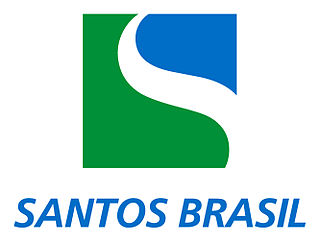Operations research, often shortened to the initialism OR, is a discipline that deals with the development and application of analytical methods to improve decision-making. The term management science is occasionally used as a synonym.

In computer science and operations research, the ant colony optimization algorithm (ACO) is a probabilistic technique for solving computational problems which can be reduced to finding good paths through graphs. Artificial ants stand for multi-agent methods inspired by the behavior of real ants. The pheromone-based communication of biological ants is often the predominant paradigm used. Combinations of artificial ants and local search algorithms have become a method of choice for numerous optimization tasks involving some sort of graph, e.g., vehicle routing and internet routing.

The Port of Miami, styled as PortMiami and formally known as the Dante B. Fascell Port of Miami, is a major seaport located in Biscayne Bay at the mouth of the Miami River in Miami, Florida. It is the largest passenger port in the world and one of the largest cargo ports in the United States.


Chennai Port, formerly known as Madras Port, is the second largest container port of India, behind Mumbai's Nhava Sheva. The port is the largest one in the Bay of Bengal. It is the third-oldest port among the 13 major ports of India with official port operations beginning in 1881, although maritime trade started much earlier in 1639 on the undeveloped shore. It is an artificial and all-weather port with wet docks. Once a major travel port, it became a major container port in the post-Independence era. An established port of trade of British India since the 1600s, the port remains a primary reason for the economic growth of Tamil Nadu, especially for the manufacturing boom in South India, and has contributed greatly to the development of the city of Chennai. It is due to the existence of the port that the city of Chennai eventually became known as the Gateway of South India.

Jawaharlal Nehru Port, also known as JNPT and Nhava Sheva Port, is the second largest container port in India after Mundra Port. Operated by the Jawaharlal Nehru Port Trust Authority (JNPTA), it is located on the eastern shores of Arabian Sea in Navi Mumbai, Raigad district, Maharashtra. This port can be accessed via Thane Creek, a nodal city of Navi Mumbai. It is the main port of the Mumbai Metropolitan Region after Mumbai Port, also of Maharashtra and Western India. Its common name derives from the names of Nhava and Sheva villages that are situated here. It is also the terminal of the Western Dedicated Freight Corridor.

The Port of Karachi is one of South Asia's largest and busiest deep-water seaports, handling about 60% of the nation's cargo located in Karachi, Pakistan. It is located on the Karachi Harbour, between Kiamari azra langri, Manora, and Kakapir, and close to Karachi's main business district and several industrial areas. The geographic position of the port places it in close proximity to major shipping routes such as the Strait of Hormuz. The administration of the port is carried out by the Karachi Port Trust, which was established in 1857.

The Port of Southampton is a passenger and cargo port in the central part of the south coast of England. The modern era in the history of the Port of Southampton began when the first dock was inaugurated in 1843. After the Port of Felixstowe, Southampton is the second largest container terminal in UK, with a handled traffic of 1.5 million twenty-foot equivalent units (TEU). It also handles cruise ships, roll-on roll-off, dry bulk, and liquid bulk.

The Port of Colombo Sinhala: කොළඹ වරාය, Tamil: கொழும்பு துறைமுகம் is the largest and busiest port in Sri Lanka and the Indian Ocean. Located in Colombo, on the southwestern shores on the Kelani River, it serves as an important terminal in Asia due to its strategic location in the Indian Ocean. During the 1980s, the port underwent rapid modernization with the installation of cranes, gantries and other modern-day terminal requirements.

Ravindra K. Ahuja is an Indian-born American computer scientist and entrepreneur. He is currently Professor of Industrial and Systems Engineering at the University of Florida in Gainesville, Florida, and CEO of the automation and optimization solutions provider Optym, which he founded in 2000 as Innovative Scheduling, Inc.
FlexSim is a discrete-event simulation software package developed by FlexSim Software Products, Inc. The FlexSim product family currently includes the general purpose FlexSim product and healthcare systems modeling environment.

Port of Baku is a sea port located in the Bay of Baku, on the coast of city of Baku, Azerbaijan. The main entrance faces the Neftchiler Avenue.

Mundra Port is India's first private port and largest container port, located on the northern shores of the Gulf of Kutch near Mundra, Kutch district, Gujarat. Formerly operated by Mundra Port and Special Economic Zone Limited (MPSEZ) owned by Adani Group, it was later expanded into Adani Ports & SEZ Limited (APSEZ) managing several ports. In FY 2020–21, Mundra Port handled 144.4 million tonnes of cargo.

Michael N. Katehakis is a Professor of Management Science at Rutgers University. He is noted for his work in Markov decision process, Gittins index, the multi-armed bandit, Markov chains and other related fields.

The Port of Aqaba is the only port in Jordan, and is owned by Aqaba Development Corporation (ADC) and has 12 terminals operated by five operators: the Aqaba Company for port management and operation; Aqaba Container Terminal; Industrial Port Company; phosphate Company; National Electricity power Company, and the pilotage operated by Aqaba Port Marine Services Company.
José Luis González Velarde is a professor and researcher with the Tec de Monterrey, Monterrey Campus.

Santos Brasil Participações S/A is a Brazilian logistics company, streamlining operations with containers. Currently the organization is publicly traded, listed on Level 2 of Bovespa's Corporate Governance, has a brAAA rating according to Standard & Poor's, and it has invested R$3 billion, calculated at present value, in the three container terminals that it administers. Among them is Tecon Santos, the largest container handler in Brazil and Latin America in yearly average with 80 MPH, which is located on the left margin of the Port of Santos, administered by the Companhia Docas do Estado de São Paulo (CODESP) under supervision of the Special Ports Department (SEP/PR), which is responsible for most of the incoming and outgoing flow of goods in Brazil. Headquartered in São Paulo, it was established in 1997 and has a concession to operate not only Tecon Santos, but also Tecon Imbituba at the Port of Imbituba in Santa Catarina, Tecon Vila do Conde in the city of Barcarena in the state of Pará, the TEV - Vehicle Terminal at the Port of Santos, as well as the General Cargo Terminal, also in Imbituba. The company also has two distribution centers: the DCs São Bernardo in the city of São Bernardo do Campo in the Greater São Paulo City Region, and in Jaguaré, also in the city of São Paulo. It also has a logistics operator, Santos Brasil Logística, that administers the Industrial Logistics and Customs Clearance Centers - CLIA Guarujá and CLIA Santos on the coast. The company develops various projects of social-environmental responsibility and focused on sports, and is recognized as a Company Friends of Sports by the Ministry of Sports.
Apapa Port Complex also known as the Lagos Port Complex is Nigeria's largest and busiest port complex. The complex consist of a number of facilities including Apapa quays, Third Apapa Wharf Extension, Apapa Dockyard, Apapa Petroleum Wharf, Bulk Vegetable Oil Wharf, Ijora Wharf, Kirikiri Lighter Terminal, and Lily pond inland container terminal. Financed and built by the colonial government of Nigeria, It became the nation's busiest port for exporting agricultural produce from the provinces of Western and Northern Nigeria in the late 1920s. Administration was transferred to the Nigerian government upon the granting of self-government and In 2005, the complex was divided into terminals and contracted out to private operators with NPA acting as the landlord and regulator.
Maria Grazia Speranza is an Italian applied mathematician and operations researcher. Her research involves the application of mathematical optimization to problems including portfolio optimization and the combination of inventory management with vehicle routing.

Michel Bierlaire is a Belgian-Swiss applied mathematician specialized in transportation modeling and optimization. He is a professor at EPFL and the head of the Transport and Mobility Laboratory.